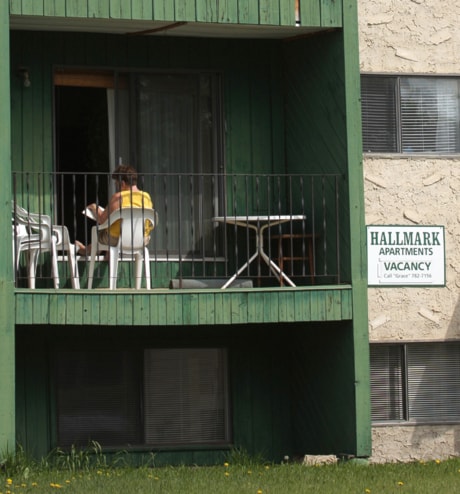The local rental market continues to tilt in tenants’ favour, although the situation varies with apartment size.
Canada Mortgage and Housing Corp.’s spring rental market survey indicates that the average vacancy rate for private apartments in Red Deer in April was 3.9 per cent, up from 3.2 per cent a year earlier.
Vacancy rates in the city ranged from 1.6 per cent in the case of apartments with three or more bedrooms, to 4.6 per cent for two-bedroom units. Bachelor suites had a 3.1 per cent vacancy rate and in the case of one-bedroom apartments it was 3.2 per cent.
Last April, CMHC determined that bachelor suites in Red Deer had a 5.3 per cent vacancy rate, with one-bedroom units three per cent, two-bedrooms 3.2 per cent and larger apartments 2.9 per cent.
When it came to rent, the average monthly cost in Red Deer was $799 in April, according to the CMHC survey. That’s virtually unchanged from 12 months earlier.
Bachelor suites were renting for $622, up from $570 in April 2008; one-bedroom units averaged $720, down from $723; two-bedroom apartments came in at $858, also down from a year ago when the figure was $866; and rental accommodations with three or more rooms were $1,001, as compared with the earlier number of $1,013.
“The downturn in economic activity and in the employment market has contributed to higher vacancies across the province,” said Richard Corriveau, CMHC’s manager of market analysis for the Prairies and Territories.
Still, the situation for renters could be better, said Jennifer Vanderschaeghe, chair of the Red Deer Housing Committee.
Higher vacancy rates is welcome news, said Vanderschaeghe, whose committee promotes “available, affordable, accessible and decent housing.” But, she added, rents remain a barrier for many, including single parents.
“It’s still a pretty tough market.”
Vanderschaeghe said she’s surprised rent costs haven’t come down, considering the rise in vacancy rates and the current economic downturn. She suggested that the latter factor might be applying upward pressure on rental rates.
“You’ve got people moving from the buyers’ market into the rental market.”
Demand for rental accommodation remains strong enough for some landlords to resist dealing with certain groups, such as disabled people and aboriginals, said Vanderschaeghe.
Across Alberta, vacancy rates in communities with 10,000 or more people averaged 4.6 per cent in April, up from 2.9 per cent a year earlier. Cold Lake had the lowest rate at 1.2 per cent, while Grande Prairie topped the list at 8.5 per cent.
Among other cities of comparable size to Red Deer, Lethbridge had an average vacancy rate of 3.1 per cent in April, Medicine Hat was 4.3 per cent and the Regional Municipality of Wood Buffalo was 6.9 per cent.
Sylvan Lake’s April vacancy rate was four per cent, as compared with 0.7 per cent last year. In Lacombe, the April figure was 2.8 per cent, up from 1.2 per cent.
The average rent charged in Alberta centres with populations of 10,000 or more was $962 in April, $9 higher than the year previous.
Medicine Hat had the lowest average rent at $654, while the Regional Municipality of Wood Buffalo was the costliest place for tenants, with an average rent of $2,088. The figure was $914 in Grande Prairie and $784 in Lethbridge.
The average rent in Sylvan Lake for April was $705, down from $757 a year ago. In Lacombe, the 2009 number was $713, as compared with $679 last April.
CMHC issued its spring rental market survey on Wednesday.
Its fall survey, which came out last year and looked at market conditions in October, concluded that year-over-year vacancy rates in Red Deer rose to 4.4 per cent from 2.7 per cent. It determined that the average rent in the city was at $818, up from $786.
hrichards@www.reddeeradvocate.com
